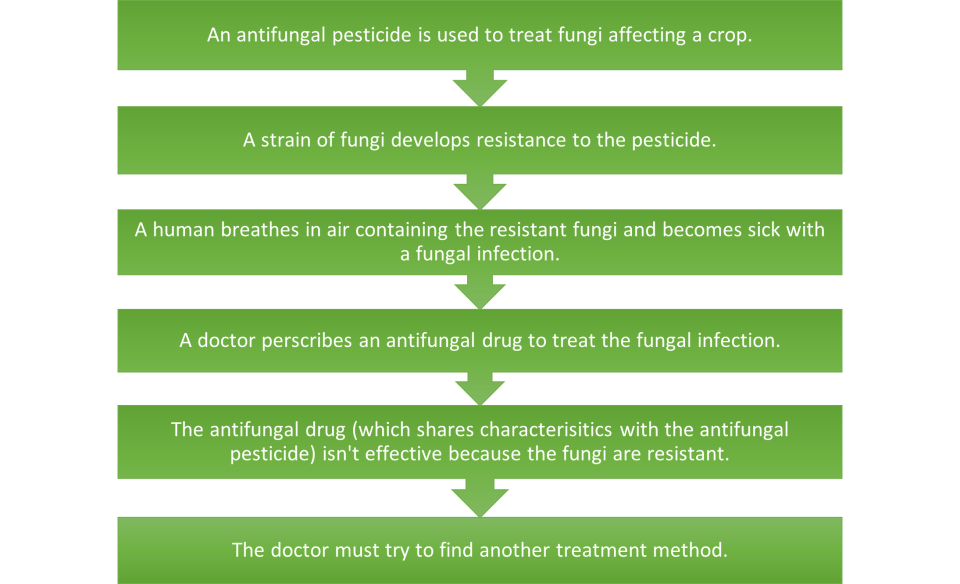Pesticides’ Impact on Antibacterial and Antifungal Drug Efficacy
- Why do some pesticides reduce the effectiveness of some drugs?
- Why is it important to address this issue?
- What is the government doing to address this issue?
- Where can I find additional information?
Many farmers use pesticides to treat bacterial and fungal diseases that affect their crops. If left uncontrolled, these diseases can be extremely damaging and can even threaten entire industries. For example, according to the U.S. Department of Agriculture (USDA), a bacterial disease known as “citrus greening” has spread across Florida since 2005, reducing citrus production by 75 percent and more than doubling the cost of production, and devastating Florida’s citrus industry.
To treat these diseases, farmers use antibacterial and antifungal pesticides. While these pesticides can be effective at managing disease on crops, there is emerging evidence that in rare cases, the use of these pesticides can reduce the effectiveness of some human and animal antibacterial and antifungal drugs.
Why do some pesticides reduce the effectiveness of some drugs?
Some antibacterial and antifungal pesticides share characteristics with antibacterial and antifungal drugs. Therefore, if a strain of bacteria or fungi becomes “resistant” to a pesticide, that strain of bacteria or fungi will also be resistant to drugs that share similar characteristics with that pesticide. As a result, a drug that would normally be used to treat a bacterial or fungal infection may not work well against those resistant bacteria or fungi.
For example, farmers sometimes apply antifungal pesticides to protect their crops from fungal diseases. However, these antifungal pesticides can make strains of a specific fungi (known as Aspergillus fumigatus) resistant.
When a human breathes in this resistant strain of fungi, they can develop a fungal infection known as aspergillosis. Since the infection is caused by a strain of Aspergillus fumigatus that is resistant to antifungal pesticides, the infection will also be resistant to antifungal drugs that share characteristics with those antifungal pesticides. As a result, the antifungal drug that doctors would normally prescribe to treat aspergillosis may no longer be effective. Alternative treatments may not be as effective or have worse adverse side effects–or an alternative treatment may not be available at all.
The following graphic demonstrates what this process may look like:

In addition to pesticides used for agricultural purposes, some antibacterial and antifungal pesticides are also used in non-agricultural settings, for example, to preserve wood or painted surfaces. These uses may also increase resistance.
Why is it important to address this issue?
Antimicrobial resistance is an urgent, global public health threat, and preserving the effectiveness of antibacterial and antifungal drugs is essential to protecting the health of humans, animals, and plants. If antibiotic and antifungal drugs lose their effectiveness due to resistance, then we lose the ability to treat infections and control public health threats.
Resistance to even one antibiotic or antifungal drug can make a sickness harder to treat. Whenever possible, we must try to prevent and/or slow the development of antimicrobial resistance. This will help avoid infection and prolong the effectiveness of antibacterial and antifungal drugs.
For more information on antimicrobial resistance, see CDC’s webpage: About Antimicrobial Resistance.
What is the government doing to address this issue?
Through a U.S. government interagency process, EPA, the U.S. Department of Health and Human Services (HHS), and USDA, under the oversight of the White House Executive Office of the President, are developing a framework that will improve assessments of potential risks to human and animal health where the use of certain pesticides could potentially result in antimicrobial resistance that compromises the effectiveness of medically important antibacterial and antifungal drugs.
As the first step in this process, EPA, HHS, and USDA published a concept note in September 2023. The proposed framework described in the concept note will expand EPA’s current process for assessing the risk that antibacterial or antifungal pesticides may pose to the effectiveness of human and animal antibacterial and antifungal drugs when EPA evaluates pesticides under the Federal Insecticide, Fungicide, and Rodenticide Act (FIFRA).
The concept note solicits stakeholder input on the proposed structure for the framework and on potential solutions, research, or mitigation approaches to reduce the spread of resistance. Feedback will then be incorporated, as appropriate, into the draft framework and the final framework, which will be issued at a later date.
